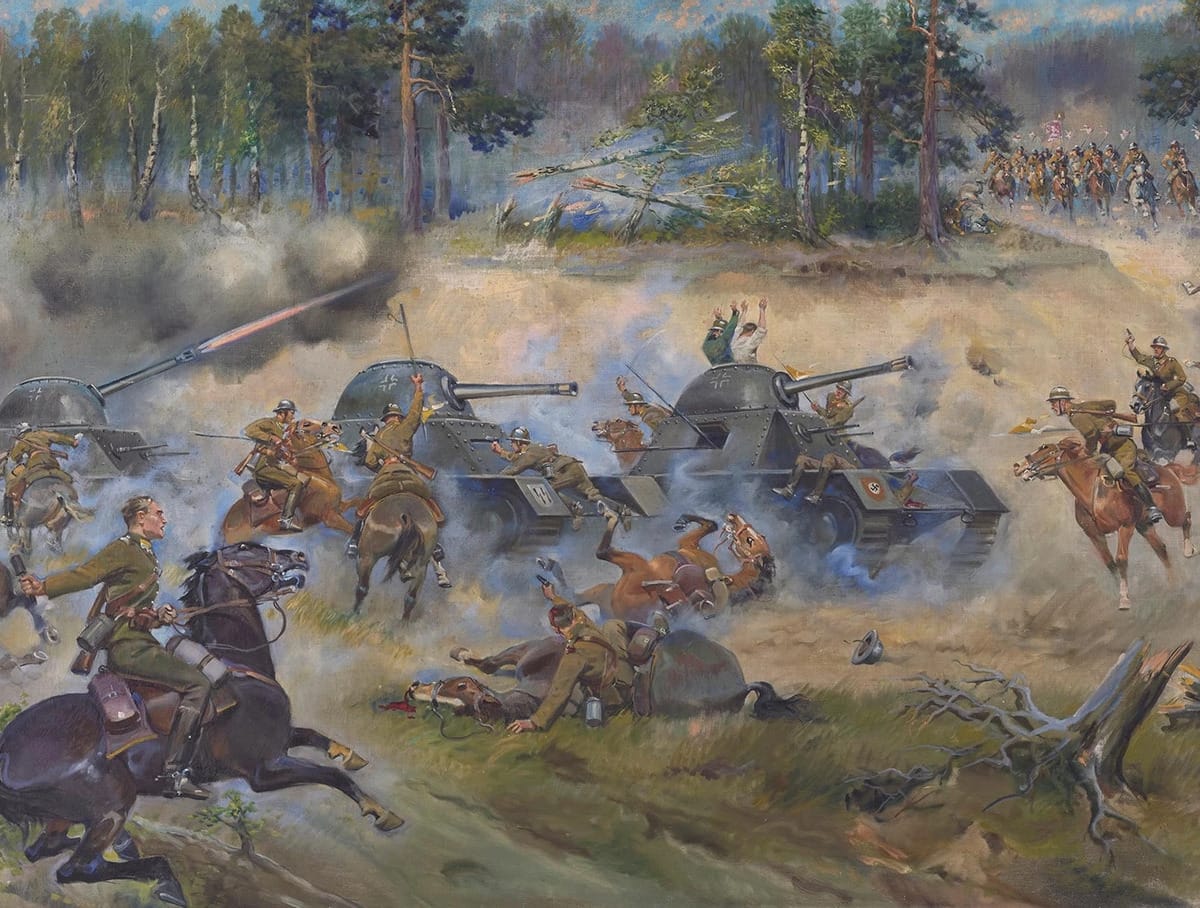The story of a suicidal charge by Polish cavalry against German armor in the early days of World War II has been mentioned many times in films and fiction. Contemporaries also write about it - for example, Winston Churchill in his multi-volume work “The Second World War”. We decided to find out whether this really happened.
About the attack of the Polish cavalrymen wrote in his memoirs, the German general Heinz Guderian, then history repeated Winston Churchill. Until now, some historians can find the statement that “the Polish cavalry rushed against German tanks” - for example, in this interview with Professor Vyacheslav Dashichev. In fiction, the image of Polish lancers attacking armored vehicles has been used quite often. The most famous example is the film "Letna"(1959) by the famous Polish director Andrzej Wajda, in which lancers vainly stab with pikes and chop down sabers tank armor. This battle was poetically described by Günter Grass in the novel “The Tin Drum”: “And so the squadrons enter the gray flanks of Krupp steel, causing the evening dawn to become even redder.” Polish cavalrymen mentioned Joseph Brodsky in the poem “September 1, 1939”: “And with the hum of the tanks, like a fingernail smoothing out chocolate foil,” the uhlans smoothed out.
The battle in question is the battle near Kroyanty on September 1, 1939. At dawn, German troops crossed border with Poland. The main blow was to be delivered by the 4th Army of General Gunther von Kluge and the 19th Panzer Corps of General Heinz Guderian, which was part of it. Polish troops retreated in an orderly manner, the 18th Pomeranian Lancer Regiment was in the rearguard.
On the evening of September 1, the lancers discovered, that not far from the village of Kroyanti a battalion of the German 76th Infantry Regiment stopped for a rest. The commander of the Pomeranian Lancer Regiment, Casimir Mastalez, threw two squadrons at the infantry, and the Germans were forced to retreat. But then the cavalry came under fire from two armored vehicles that had not been noticed by reconnaissance. The lancers suffered serious losses and hastily retreated. Already in this brief synopsis of the battle, inconsistencies with the later myth are visible: the Polish cavalrymen attacked infantry, and not tanks, which, however, were not even tanks, but armored vehicles.
The original source of the story about the mad attack with sabers and pikes against tanks is General Guderian himself. In his memories he writes: “The Polish Pomeranian cavalry brigade, due to ignorance of the design data and methods of operation of our tanks, attacked them with melee weapons and suffered terrible losses.” This contradicts his own notes about the first hours of the war, when in a similar situation the Poles successfully held back the advance of German troops: “The commander of the 2nd motorized division reported after midnight that he was forced to retreat under the pressure of the Polish cavalry. Hearing this, I was at first speechless, then, pulling myself together, asked the division commander if he had ever heard of Pomeranian infantry running from enemy cavalry.”
The next day, correspondents, both German and foreign, arrived at Guderian's headquarters. They were shown the bodies of Polish cavalrymen, and then the journalists presented the version invented by Guderian, which said that the stupid Poles simply did not know that the armor could not be cut. The corresponding article appeared in the magazine Die Wehrmacht and other propaganda publications.
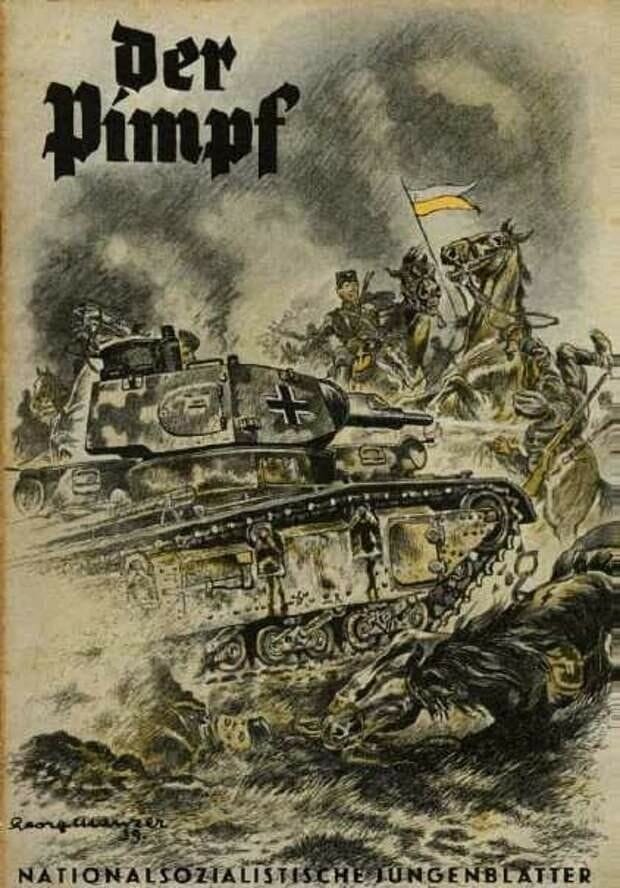
Later, this plot was repeatedly used by Nazi propaganda. The powerlessness of the Polish cavalry against the might of German tanks was shown in the 1940 film "Polish campaign"(Feldzug in Polen) and in the 1941 film "Bomber Squadron "Lützow""(Kampfgeschwader Lützow).
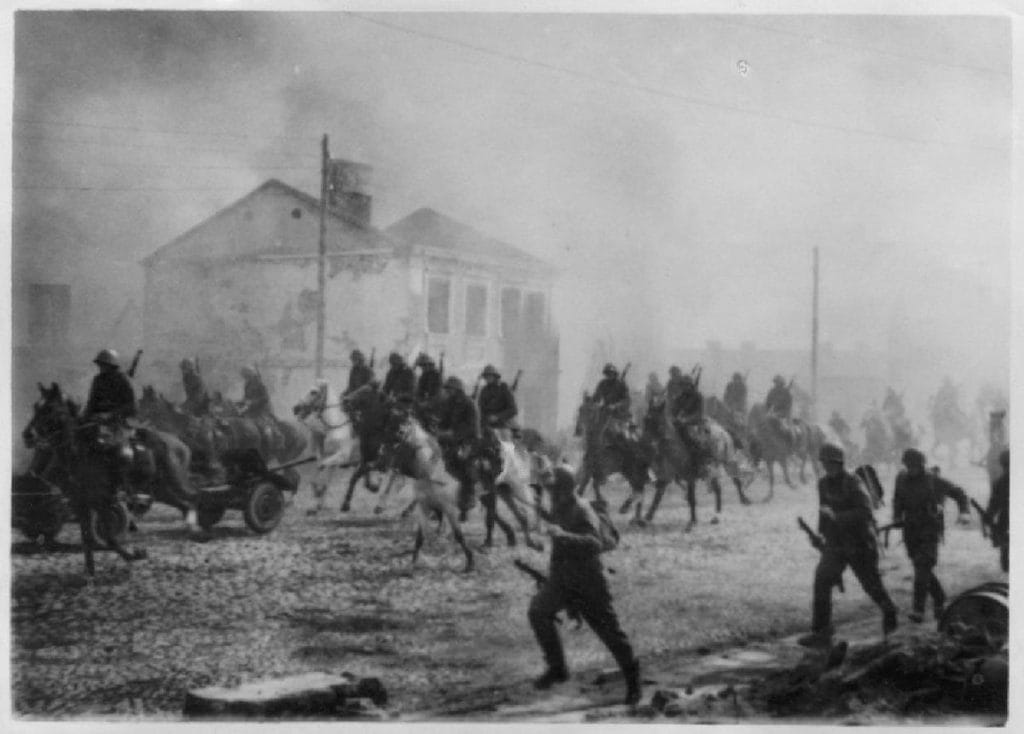
There are many inconsistencies in Guderian's version. The 18th Pomeranian Regiment was armed not just sabers and pikes. Cold and piercing weapons remained a tribute to tradition. The lancers relied on carbines or rifles. Before the battle, the regiment had 26 machine guns and four anti-tank rifles.
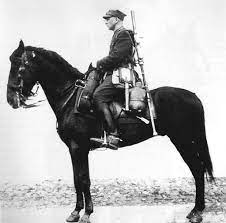

Historian George Parada notes, that the least plausible in Guderian’s retelling is the statement about ignorance of the characteristics of armored vehicles. Polish Army used tanks since 1919, these were the French Renault FT-17.
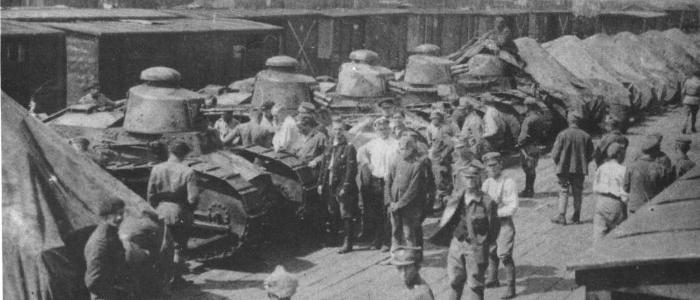
By 1939, the Polish army had at its disposal 574 tankettes (light reconnaissance tanks), more than 300 light tanks of Polish and French production, 100 armored vehicles and 11 armored trains. Moreover, the TK and TKS tankettes were also part of the 18th Pomeranian Lancer Regiment.

Finally, the battle near Kroyanty is just one of many September battles in which Polish cavalry took part. On the same day, September 1, the Volyn Cavalry Brigade, fighting with the support of an armored train, light tanks and infantry, forced the tanks of General Reinhardt's 4th Division to retreat. And in the battle in the Royal Forest, the Polish cavalry defeated the German cavalry.
With the light hand of General Guderian, the image of Poles with pikes and sabers against tanks took root in Poland, only with the opposite sign. The main motives of Wajda’s film “Letna” are the desperate courage and at the same time the deliberate doom of the defenders of Poland. The myth about the Pomeranian lancers and German vehicles fits well into this semantic outline.
Nevertheless, the myth remains a myth. The Polish military was worse equipped than the German - this is true. The cavalry of the Polish army was more reasonable from the point of view of modern military affairs for that time and in comparison with neighboring countries - this also, apparently, corresponds to reality. However, at Kroyanty, as in other battles of September 1939, Polish cavalrymen did not cut down tank armor with sabers.
Not true
Read on topic:
- Alexey Isaev. Ten myths of World War II.
- Steven J. Zaloga. The Polish Army 1939-45
- Richard Hargreaves. Blitzkrieg Unleashed: The German Invasion of Poland 1939
If you find a spelling or grammatical error, please let us know by highlighting the error text and clicking Ctrl+Enter.


